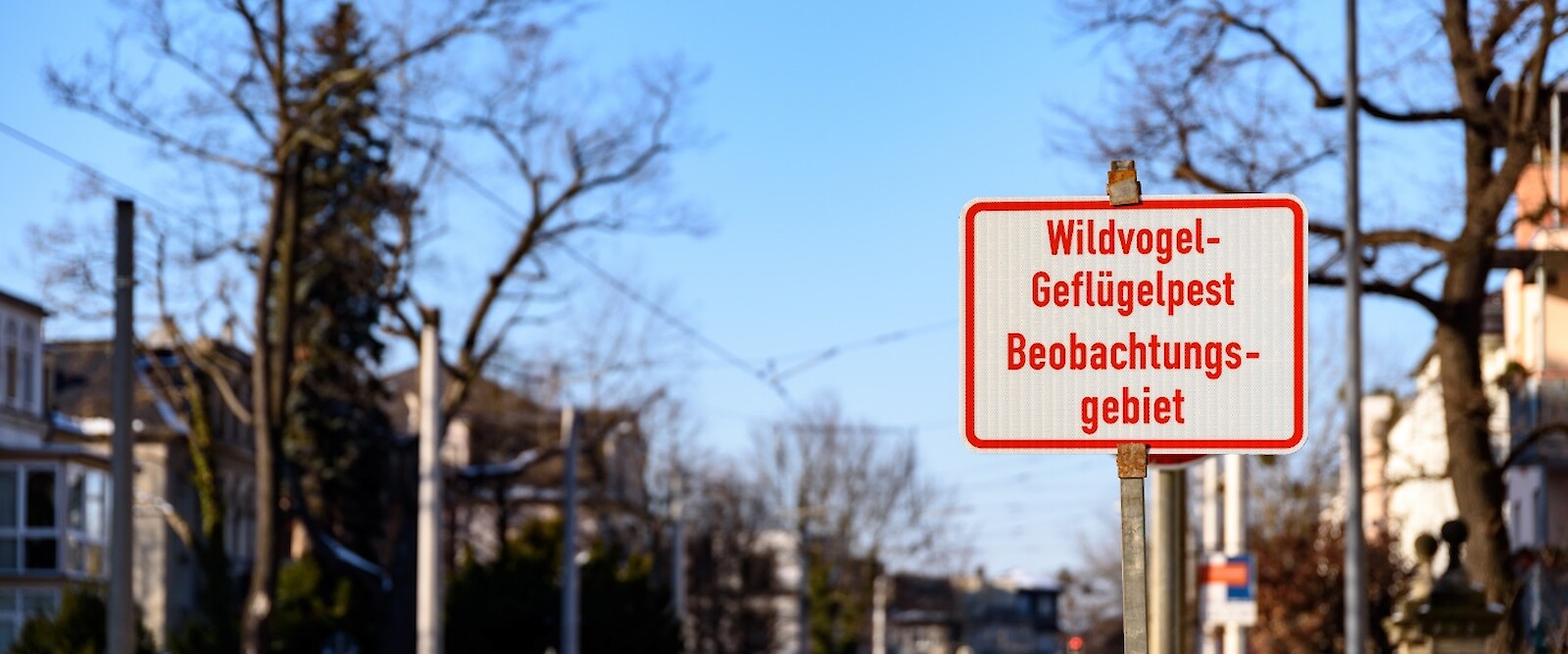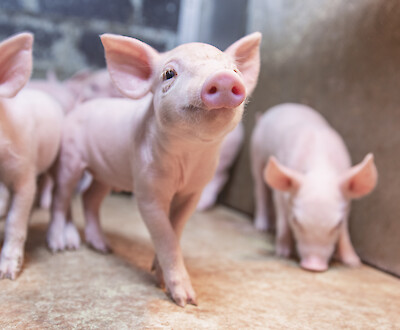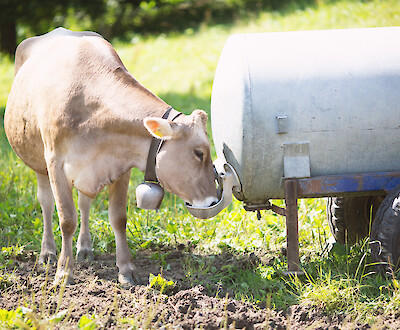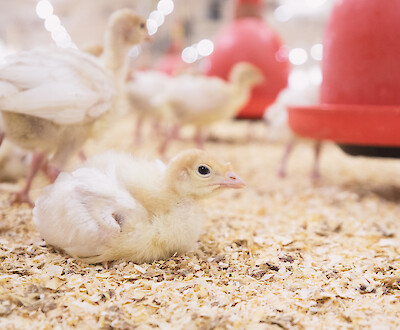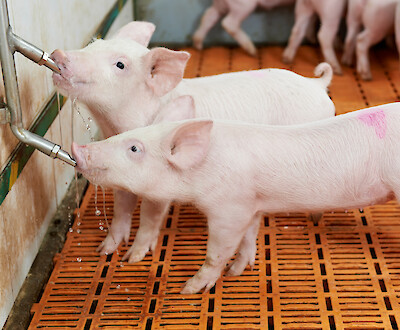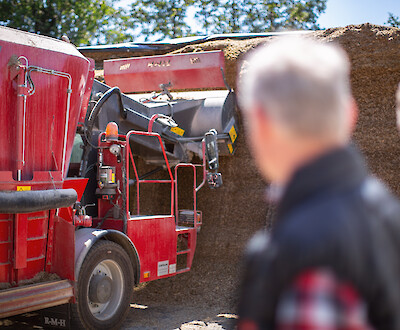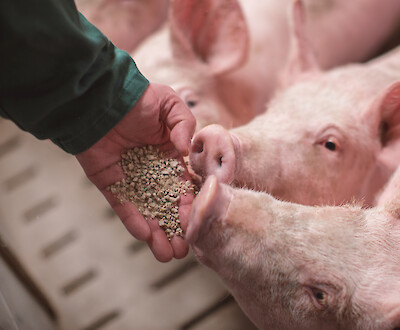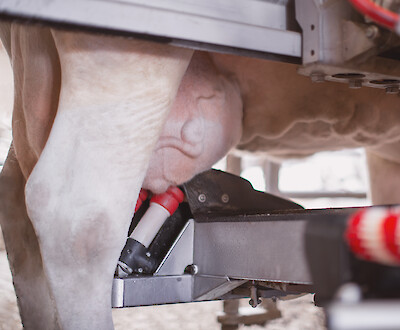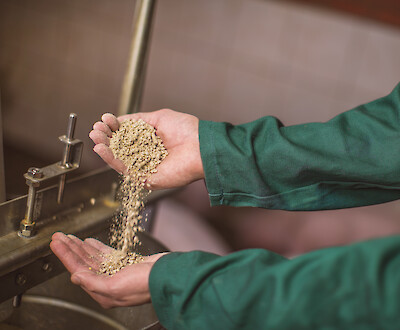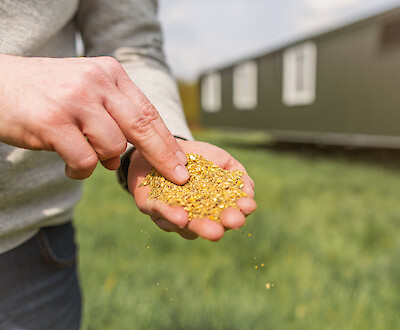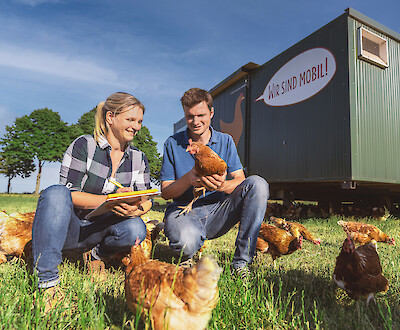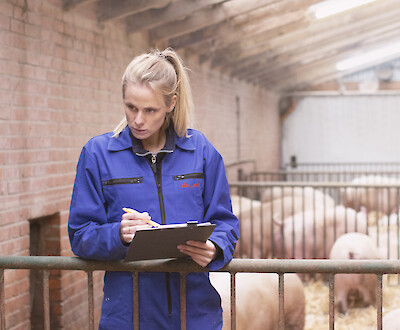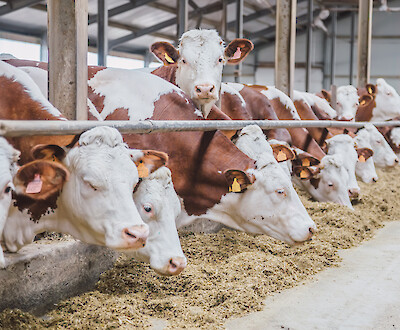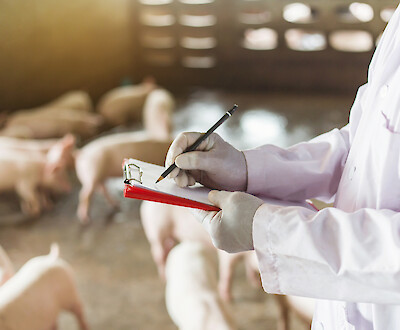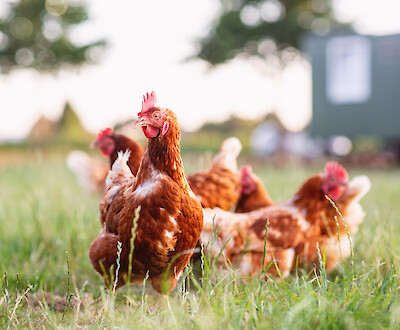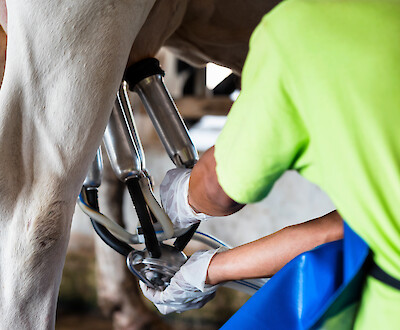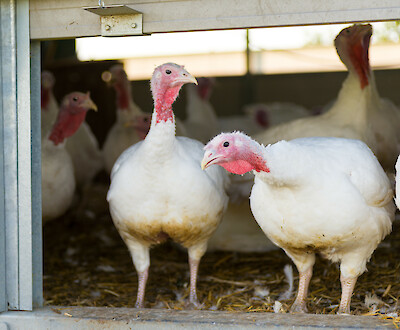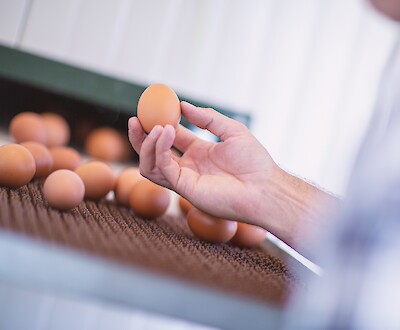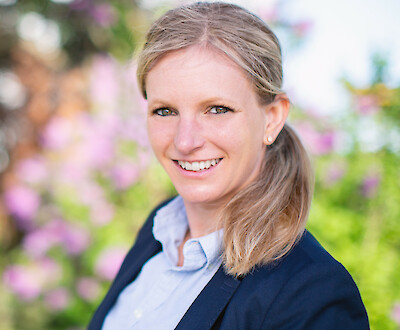Feed supply even in the event of an epidemic
Bird flu: How safe is the supply of feed?
Year after year, outbreaks of avian influenza are observed earlier and earlier. It is therefore no longer possible to speak of a clearly defined "bird flu season" between autumn and spring. And yet: the number of cases increases steadily from October / November onwards. This year was no exception. An introduction of the pathogen during bird migration poses a particular threat to poultry stocks at this time. But how can an outbreak on a farm be prevented and its spread contained? And finally: How safe is the supply of poultry feed in the event of an epidemic? Our report provides answers.
Definition: What is avian influenza?
Avian influenza is a viral disease that is fatal for many birds. It is caused by highly pathogenic avian influenza viruses (Latin for bird flu; HP-AIV) of subtypes H5 and H7. The risk of infection in poultry differs from species to species: chickens and turkeys in particular are susceptible to infection with the disease, also known as avian influenza (AI). The course of infection can be dramatic. The mortality rate is up to 100 %. Due to the high infection rate and the associated rapid spread, the disease is also colloquially referred to as "avian influenza".
In contrast, ducks and geese are more robust. Infection with the highly contagious disease in these poultry species is usually less symptomatic and has a lower mortality rate.
Update 2021: Avian influenza in Germany
Between October 2020 and spring 2021, many German states experienced a particularly strong wave of avian influenza infections. In contrast to previous years, the epidemic never came to a complete standstill in 2021. Especially in northern Europe, local outbreaks with the pathogen HP-AIV H5(Highly Pathogenic Avian Influenza virus) were repeatedly registered throughout the summer. Birds of prey and waterfowl were particularly affected. This circumstance makes a renewed occurrence of avian flu or avian influenza in autumn 2021 likely.
Source: Risk assessment of the Friedrich-Löffler-Institute (as of 13 September 2021)
How do poultry become infected with avian influenza?
Wild birds are a natural reservoir for viruses that can cause avian influenza. Spread is usually gradual ("relay-like"), in that the virus is passed on by the migrating birds at each resting place. Avian influenza spreads in Germany especially during periods of bird migration. Transmission in wild birds occurs through direct contact with infected conspecifics. Even the smallest amounts of faeces or nasal secretions that come into contact with mucous membranes are sufficient for this.
A number of different factors subsequently favour the introduction of the disease into poultry flocks:
In free-range husbandry, direct contact of poultry with infected wild birds or their droppings is possible. Therefore, avoid feeding and placing feeding troughs outdoors to avoid attracting wild birds. Open water areas also pose risks.
But the virus can also penetrate closed housing: In particular, the movement of people, vehicles and goods as well as the housing of poultry are possible weak points. In addition, the virus can enter indirectly via feed and water contaminated with contaminated faeces or contaminated equipment, footwear, protective clothing or litter.
To minimise the risk of an outbreak, especially in months when birds are migrating, farms should emphasise biosecurity measures during this period.

What happens in the event of an outbreak of avian influenza?
Measures to contain an outbreak of avian flu or avian influenza are based on the affected population:
- If avian influenza is found in a wild bird in Germany, a protection zone is set up and a surveillance zone is also designated around the place where it was found. In these areas, all poultry are examined and disinfection measures (e.g. vehicle disinfection) are carried out. These measures are valid for 30 days, provided that no new cases occur. The specific procedure is at the discretion of the competent authority.
- In the event of a confirmed suspicion of avian influenza or avian influenza on a poultry farm, the premises are closed off, the poultry are killed in accordance with animal welfare requirements and then destroyed. In addition, a protection zone with a radius of at least three kilometres and a surveillance zone are established. The radius of the surveillance zone is at least ten kilometres.
Within the protection zone, the animals must be kept indoors. Warning signs are also obligatory. In the protection zone, authorities may order the killing and harmless disposal of birds in accordance with animal welfare requirements.
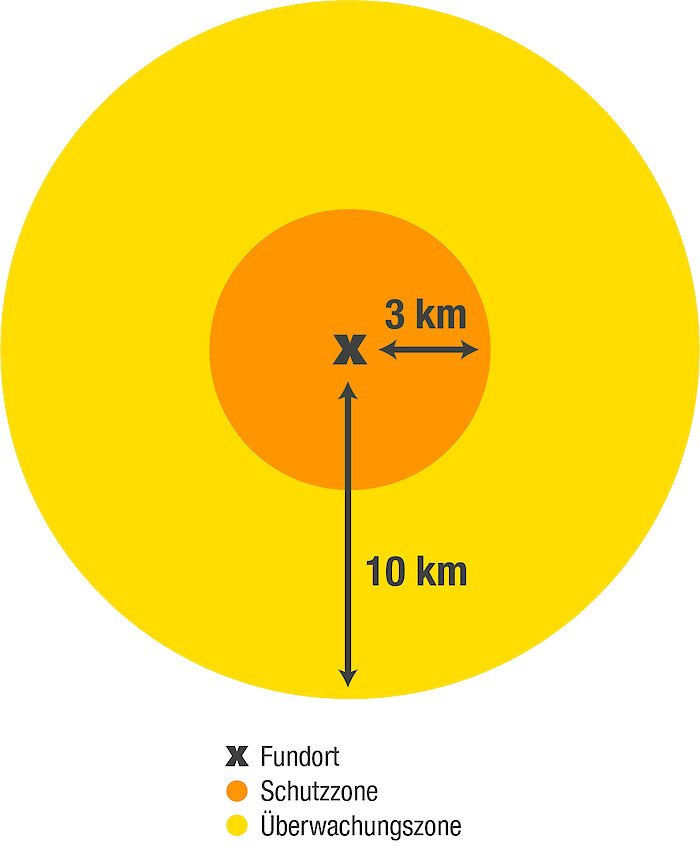
Current risk assessment on avian influenza in Germany and Europe
The epizootic situation in Germany changes daily. To get an overview of current developments, the Friedrich-Loeffler-Institut (FLI) offers a regular news ticker on its website. The section "Avian Influenza (AI) / Avian Influenza" lists all the Institute's reports on avian influenza and avian influenza in detail. Those interested will also find links to the daily updated case numbers in the Animal Disease Information System (TSIS) as well as maps showing the distribution of cases in Germany and Europe. Background information on avian flu and avian influenza rounds off the service.
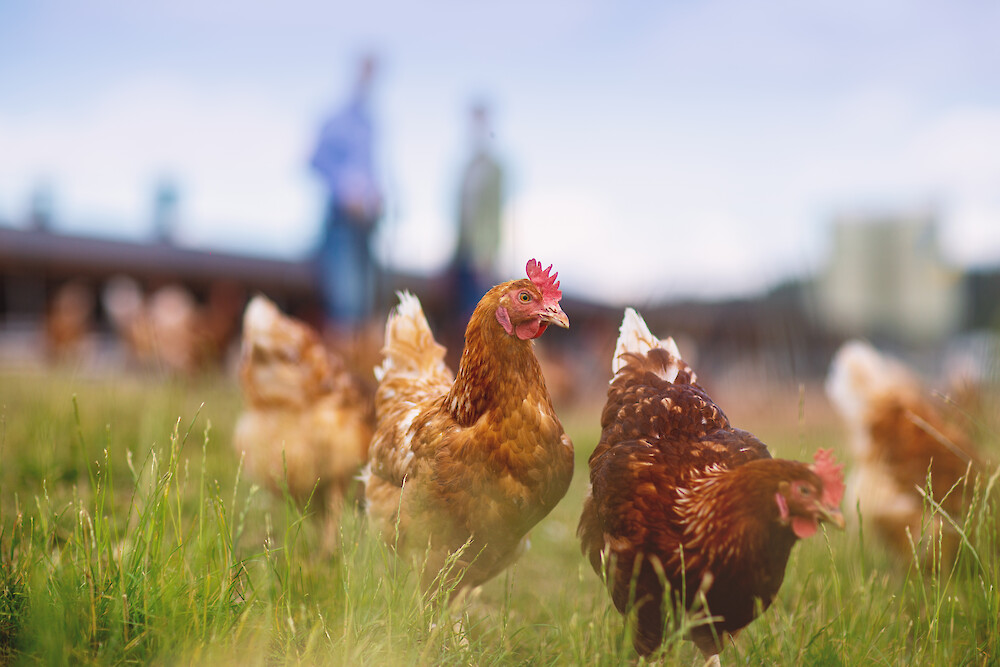
How safe is the supply of feed in the event of an epidemic?
Detailed official safety measures apply to the supply of poultry feed to the protection and surveillance zone in the event of an epidemic. Specifically, these are mainly measures for cleaning and disinfecting vehicles and specific hygiene measures
- Use of protective equipment (disposable overalls, shoe covers, etc.) by truck drivers when delivering feed.
- Disposal of protective equipment on the farms.
- Cleaning and disinfection of the vehicles before entering the premises and after unloading the goods (especially the tyres and hoses).
- Finally, suspected or infected farms may only be supplied after obtaining written permission from the competent authority.
By adhering to these and similar hygiene measures, agricultural traders and forwarders reduce the risk of transmission following an outbreak of avian flu or avian influenza in their delivery area. In this way, a supply of feed is guaranteed even in the event of an epidemic.
Risk traffic light determines bird flu risk on farms
Only a concrete risk analysis allows farms to assess the risk of their flock being infected with avian influenza pathogens and to take appropriate measures. With the "Risk traffic light for animal diseases"the University of Vechta offers poultry farmers a tailor-made online tool for this purpose.
The risk analysis is based on general data about the farm as well as 100 questions about the three relevant risk areas "securing the farm", "securing the barn" and "work processes". The programme clearly displays the results in traffic light colours. In addition, the system offers an optimisation analysis that suggests measures for a safe operation. The risk traffic light is supported by the Friedrich-Loeffler-Institute (FLI), the Central Association of the German Poultry Industry (ZDG) and the organisation "QS Quality and Safety", among others.
Conclusion
- In autumn, the risk of an outbreak of avian influenza or avian influenza in poultry houses increases.
- Poultry kept in free-range systems become infected through direct contact (e.g. with the droppings) of infected wild birds.
- In closed housing systems, avian influenza or avian flu is introduced through housing, movement of personnel or goods, as well as contaminated feed, water, equipment, footwear, protective clothing or contaminated litter.
- Suppliers of feed must comply with a number of cleaning and disinfection measures.
Further information
- Further information on avian influenza and avian influenza control measures can be obtained from your local veterinary office or from the Friedrich-Loeffler-Institut (FLI).
- Fact sheet Influenza infections in poultry and wild birds "Influenza infections in poultry and wild birds" (as of August 2019).
- Information letter "Classical avian influenza (Highly pathogenic avian influenza)" from the Friedrich-Loeffler-Institute (as at: August 2019).
- The section "Avian Influenza (AI) / Avian Influenza" on the website of the Friedrich-Loeffler-Institute (FLI) lists all reports of the Institute on avian influenza or avian influenza in detail.
- To the "Risk traffic light for animal diseases" of the University of Vechta.
Picture credits: © Mattoff - stock.adobe.com (top slider)

